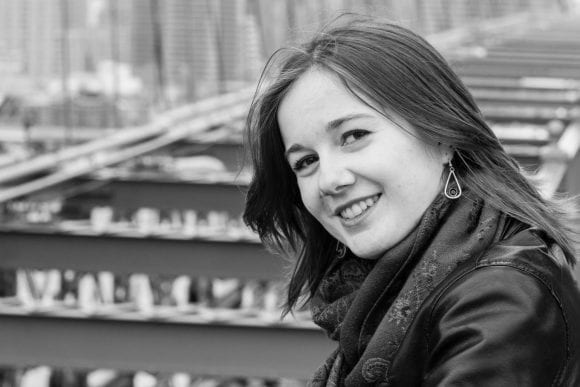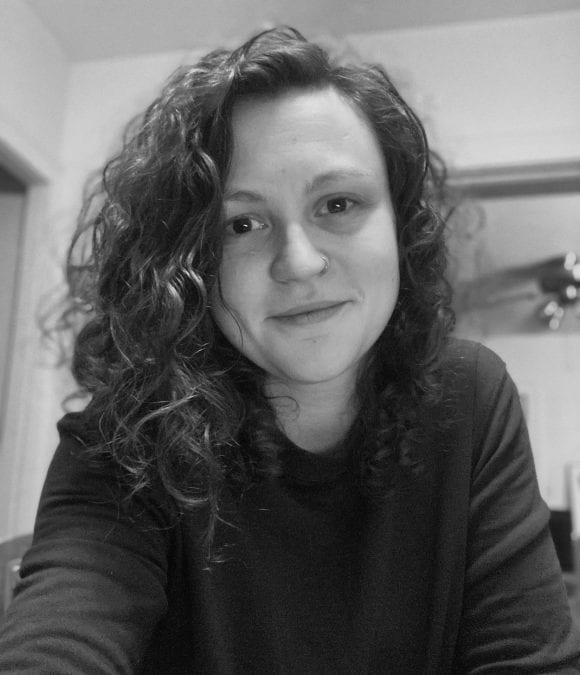Charlotte Kupsh
Erika Luckert
As the number of vaccinated people in the US grows steadily and the prospect of an in-person fall semester looms in our future, we’ve found ourselves asking one another what this means for our writing centers. The online format of consulting adopted by ours and many other writing centers has offered new affordances and constraints to our work. As two writing center consultants and graduate students in rhetoric and composition, the rhetorical situations of our lives are never far from our minds. In what follows, we explore two scenes from our online consulting that have made us think in new ways about issues of access, writing as a social practice, and materiality in the writing center. As we write, we think about the lessons we’ll take with us when we return to our physical spaces.
*
Erika
When the writer’s video square appears, she’s dressed in a hoodie and sitting up in bed. Today, the writing center exists in this writer’s home, in the cozy space of her bed. She draws my attention to her surroundings—I think the headboard makes a nice background, she says. We make small talk before we get down to the writing—some effort to close the feeling of distance between our two video squares.
I began working in our writing center during the pandemic, and so like this writer, I’ve never had a writing center appointment in our physical space, which is furnished in the image of most writing centers, with couches, round tables, and a coffee pot (McKinney 21). Jackie McKinney asks a question that resounds differently now: “If a writing center is a home, whose home is it? Mine? Yours?” (25).
For this writer, dressed in comfy clothes and sitting in bed, the writing center is her cozy home. And yet something still seems missing from her experience. This cozy writer tells me she might put on makeup, pick out an outfit, if she were going to see her peers. She visits the writing center without seeing any other writers at all, just as I sign into my shift each day without seeing any fellow consultants. This writing center that exists in disparate spaces, for different writers, even when their homes are cozy, is a lonely one.
Though I’ve never worked in our physical writing center space, I suspect that what distinguishes it is not its constellation of objects (McKinney 21), but its constellation of people. Writing is not just a solitary cognitive process; it’s a social activity (Cooper 366). A physical writing center is more than a collection of one-on-one appointments running simultaneously—it’s a social space, and it helps students see writing as social too. I begin to wonder how we might make this online space feel more populated, less alone. In my appointments, I make references to other visitors, trying to create the illusion of other writers in the space. I’m not convinced that it’s working. Our online format makes the importance, and the lack, of this social dimension more visible. It makes me wonder how I might build that social dimension more intentionally when I work with writers in person too.
Charlotte
A Writing Fellow in our writing center tells me about a conference she had with a writer. The writer was wearing a fast food uniform, and as the conference began, the Fellow realized that the writer was in a break room. “It was obviously on her break at her job,” the Fellow said. “So I thought that was pretty cool, that she could still make it to the conference!”
The image of that writer in the break room has stuck with me long after that conversation. I have long been interested in how writing centers reveal the material conditions of writers’ composing lives. In person, we can see how they fiddle with a pen, how they arrange their papers and notes, and the ease or difficulty with which they navigate through their various technological composing spaces. In the pandemic, our access to writers’ material conditions has expanded dramatically. The demands of social distancing have opened digital windows into our writers’ lives, and at times, this insight helps us understand one of the central arguments of ecocompositionists like Sidney Dobrin: writing and environments are interconnected, and written discourse is always influenced by and in turn influences its environment (20). Consultants can see the complicated web of environment, roommates, technology, multitasking, and space, and the written work that emerges from it. It is an exciting possibility, a chance to understand another piece of what Asao Inoue calls the “writing assessment ecology.”
The writer in the break room catches me at an uncomfortable point between excitement and apprehension. The digital space offers unique glimpses into writers’ material realities. It helps build a center that is more broadly accessible, too. But at the same time, it’s also clear that the digital spaces that emerged during the pandemic have hastened what Nedra Reynolds calls the compression of time-space; online, the material world collapses and falls away so that students are enabled and perhaps pressured to simultaneously be employee and student, doing more work in less time. As I consider the shift back to in-person consulting, I wonder how we can keep the accessibility that online consulting offered. Simultaneously, though, I worry about how we have normalized the stripping away of material boundaries between work, life, and our centers.
*
We don’t yet know for certain when our writing center will move back to its physical space, or whether online consultations will continue. The images of these writers remain in our minds, challenging our assumptions about what constitutes a writing center. We’re still thinking through their implications, but it seems clear that the social and material dimensions of writing that are revealed in this moment will continue to inform the work that we do. How will we recommit ourselves to the work with an awareness of how our writing center spaces have changed?
Works Cited
Cooper, Marilyn M. “The Ecology of Writing.” College English, vol. 48, no. 4, 1986, pp. 364–375.
Dobrin, Sidney, and Christopher Weisser, editors. Ecocomposition: Theoretical and Pedagogical Approaches. SUNY Press, 2001.
Inoue, Asao B. Antiracist Writing Assessment Ecologies: Teaching and Assessing Writing for a Socially Just Future. Parlor Press, 2015.
McKinney, Jackie Grutsch. Peripheral Visions for Writing Centers. University Press of Colorado, 2013.
Reynolds, Nedra. Geographies of Writing: Inhabiting Places and Encountering Difference. Southern Illinois University Press, 2007.
About the Authors
 Erika Luckert is a poet, writer, educator, and PhD student in Composition and Rhetoric at the University of Nebraska-Lincoln. Her research has appeared or is forthcoming in Writing on the Edge, Journal of Creative Writing Studies, and Recollections from an Uncommon Time: 4C20 Documentarian Tales. She currently serves as the Assistant Director of Composition, and works as a consultant in the Writing Center.
Erika Luckert is a poet, writer, educator, and PhD student in Composition and Rhetoric at the University of Nebraska-Lincoln. Her research has appeared or is forthcoming in Writing on the Edge, Journal of Creative Writing Studies, and Recollections from an Uncommon Time: 4C20 Documentarian Tales. She currently serves as the Assistant Director of Composition, and works as a consultant in the Writing Center.
 Charlotte Kupsh is a teacher, writer, and PhD student at the University of Nebraska-Lincoln, where she is an Assistant Director of the University Writing Center. Her recent work has appeared in Reflections and Writing on the Edge.
Charlotte Kupsh is a teacher, writer, and PhD student at the University of Nebraska-Lincoln, where she is an Assistant Director of the University Writing Center. Her recent work has appeared in Reflections and Writing on the Edge.